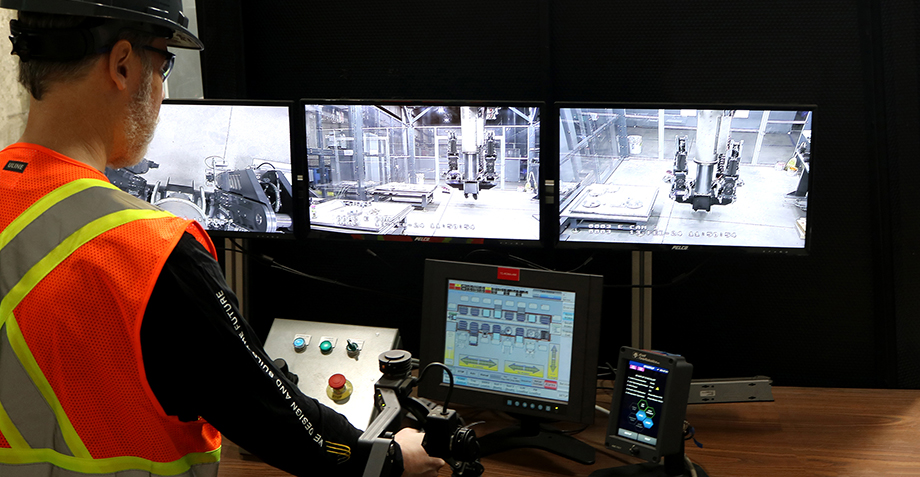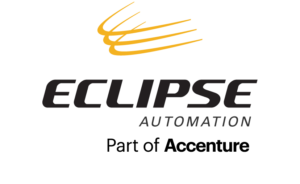

Brad Zalischuk, Program Manager, Digital Manufacturing Transformation
5 minutes read time
End-to-end digitization is making factories better, faster, and smarter. Here’s how.
When it comes to building a new factory line, creating an elaborate 3D model that includes every nut and bolt might seem like overkill. While it’s true that 3D modeling can help when designing individual machines, and perhaps simulate potential breakdowns, isn’t this all just virtual reality for the sake of it? Do digital twins really have a role to play in automated manufacturing systems?
Absolutely. Not only does digital twin technology have the power to dramatically improve the design of new machines, stations, and factory lines, but it can also radically optimize their physical construction and ongoing maintenance phases. Here, we break down the main benefits of digital twin manufacturing as central to custom automation solutions: before, during, and after the build.
In This Article
- Digital twin technology offers manufacturers a real-time, interactive, 1:1 scale 3D model of their machines, workstations, and factory lines, down to the very last screw
- Manufacturers can use digital twins to:
- Tour concepts and designs in detail before committing to them, surfacing issues and identifying opportunities not easily caught in a written manual or 2D.
- Improve collaboration across SMEs (electricians, mechanical engineers, PLC programmers, etc.) via simultaneous on-site review.
- Monitor build status in real-time, allowing for more nimble project management in the event of parts delays or mid-build ECRs.
- Onboard maintenance and operations personnel via VR without waiting for completion of physical build.
- Reduce downtime via predictive maintenance and rapid broken part identification and replacement.
What is digital twin technology?
Unlike static 3D models, digital twin technology is a living, dynamic counterpart to your physical machines and your plant more broadly. Rather than provide a snapshot of your factory that’s frozen in time, in other words, digital twins change with the machinery itself, so you can locate, assess, and even manipulate or modify parts — instantly, collaboratively, from anywhere in the world. A real-time “double” to current and/or planned machinery, digital twins offer tremendous end-to-end benefit, from accelerating the prototyping, design, and costing phase, to optimizing workflows around current build status, to predictive maintenance, downtime reduction, and floor plan evolution.
Before the build: de-risking design, optimizing layouts
It’s one thing to review spec sheets and floor plans, and another to take a high-fidelity virtual tour of your concept, in situ, before it is even built. Not only is it much faster to review each station with your own eyes, pulling up documentation as needed, but it allows experts to leave feedback directly on individual parts and fitments, catching errors and inefficiencies, and discovering new optimizations that otherwise aren’t easily surfaced. Better still, experts can explore and experiment in real time—simultaneously and across disciplines—moving or modifying machines as needed to improve layout, workflow, and design.
In short, digital twin technology allows manufacturers to rigorously test drive their concept first-hand and get a thorough feel for its functions before signing off.
- Summary: Digital twins allow for greater visualization, contextualization, and collaboration at the design and planning stage, de-risking outcomes and optimizing results.
During the build: faster onboarding, smarter project management
When it comes to onboarding maintenance and operations personnel, manufacturers no longer have to wait until their lines are more or less built. With a 1:1 scale virtual factory at your fingertips, you can start to train your staff on it as soon as design has been approved, and in parallel with the earliest stages of construction.
Meanwhile, manufacturers can visualize the status of their physical build in real time (introducing engineering change requests as needed), see where such ECRs would be easily and immediately introduced vs. where costs and delays might be involved.
- Summary: Digital twin technology allows manufacturers to onboard maintenance and operations teams before their physical lines are even built, and unlocks more nimble, cost-effective project management during the construction phase when faced with potential change requests, parts delays, and other unforeseen events.
After the build: reduce downtime, predict maintenance, improve OEE
Let’s say a conveyor belt snaps and you need to replace it. Historically, the service team would go into their database to track down its serial number, or have to sift through design files. That’s a lot of manual labour just to find a single ID.
With digital twin technology, all you have to do is navigate to the broken part, click on it, and the part number is immediately provided. Pretty soon you can even just click “replace.”
And since every part has a digital twin, that part can also be tested for resilience at speeds much faster than in real life. Put differently: you can’t fast forward reality, but you can fast forward the simulation, meaning you can better predict which parts are likely to break down and when, and secure replacement parts for them in advance so downtime is kept to an absolute minimum.
- Summary: Digital twin technology is key to the manufacturing automation landscape. A smart factory allows a manufacturer to reduce downtime through instant identification and replacement of broken part IDs and by predicting which parts are likely to break down in the first place.
Conclusion
Digital twin technology is poised to revolutionize the manufacturing industry and unlock value across every phase and department. By pairing physical factories with comprehensive digital ones, manufacturers will soon be able to access a single source of truth about their plants from anywhere in the world—instantly, simultaneously, and in real time. Digital twin technology is nothing less than the future of manufacturing, and it’s happening right now.


